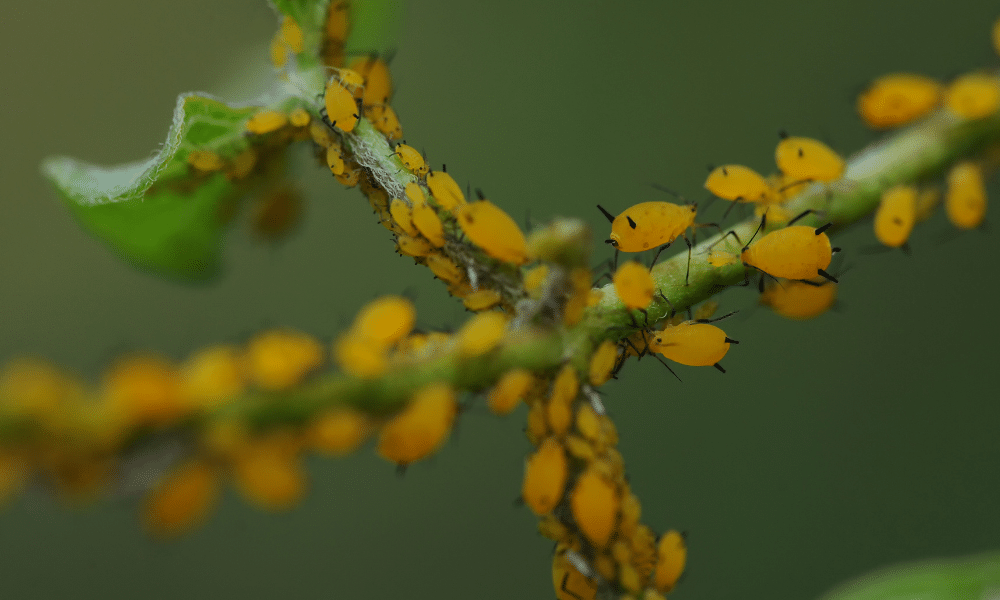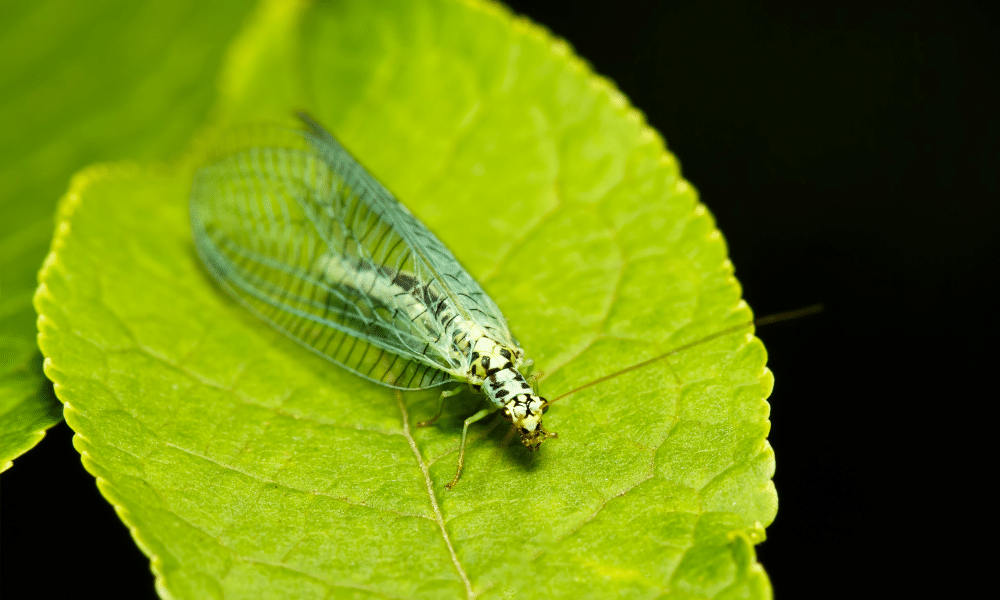If you notice a large increase in small green flying insects in your garden, you may be concerned. What could they be and where did they come from?
Lacewings are small, light-green bodied insects with pale green wings when they are an adult. If you’re a new gardener, it can be challenging to know which bugs are doing good and which are not. So, should you be concerned at the sight of lacewings? Are lacewings harmful to plants?
No, lacewings are not harmful to plants. They do not eat or damage any part of the plant during their life cycles. In fact, lacewings are considered to be beneficial to plants and gardens.
Are Lacewings Beneficial to Plants?
Lacewings are beneficial to plants because they eat pests that can be detrimental to plants. Aphids, mealybugs, certain beetles, caterpillars, and mites all damage plants and crops within your garden.
Fortunately, lacewing larvae will feed on these pests, sometimes eating as many as 1,000 a day!
Although lacewings are a positive for your garden, you should actually be concerned if you see their numbers increasing in your garden. It could be a sign that you have a major pest infestation.
Since lacewing larvae are predators, they need these pests as food to continue to grow until they form their cocoons. Once they emerge from their cocoons, they have entered the adult phase in the life cycle. Lacewing larvae will naturally gravitate towards areas where there is a bountiful source of food – often aphids!

The positives don’t end with the larvae. Fully-grown lacewings will also bring benefits to your garden. Adult lacewings will help pollinate flowers as they move from plant to plant to feed on nectar and pollen.
Lacewings are not considered major pollinators, but they do help spread pollen during their short lives.
Why are Lacewings Good for the Garden?
Lacewings provide many benefits to your garden. Adult lacewings will provide minor pollination as they consume nectar and pollen from plants. They also will lay eggs on the bottom side of leaves that hatch to lacewing larvae after 5 days.
Lacewing larvae provide the most benefits to your garden in the form of pest control. Lacewing larvae consume aphids, thrips, mealybugs, whiteflies, and mites as their food source.
During their 2-3 weeks as larvae, lacewings will eat millions of pests, making them a great addition to your garden space.
Do Lacewings Pollinate?
When you notice small green insects buzzing around your plants, going from flower to flower to feed on nectar and pollen, you may wonder if lacewings pollinate.
Yes, adult lacewings do create a pollination cycle as they search for food in flowers. However, they are not considered to be effective or major pollinators.
Adult lacewings are considered a minor pollinators. This means that even though they are pollinating plants, the amount of pollination they do is small compared to other insects.
The biggest role adult lacewings play in your garden is to lay the eggs that hatch to lacewing larvae. Lacewing larvae will help keep the aphid and other pest populations down in your garden by eating them.
How Do You Encourage Lacewings?
If you want lacewings in your garden then one of the best ways to attract them is to plant things that they are known to love. If you stick to plants from the parsley or aster families then these will work wonders (we’ve got a full list here).
The other thing you can do is leave nature alone. Avoid spraying pesticides in your garden and, instead, allow some pest populations to expand. Once pest populations, such as aphids, grow then lacewings will naturally come to your garden.
Yes, it is possible to buy lacewings if you don’t want to wait for them to come naturally to your garden. Online retailers will sell the eggs as will some specialist garden centres.
Summary
The good news is that lacewings are not harmful to your plants. They do not eat plants nor do they carry diseases that can cause damage to plants.
In fact, lacewings are actually beneficial to plants. Lacewing larvae will work their way through 100s of aphids, eating them up and removing any major infestations you have in the garden – all naturally, for free and without the need for any chemicals.
The benefits that lacewings bring to your garden continue as adult lacewings are also known to be minor pollinators. Lacewings really are completely beneficial to your garden which is why you should encourage them.







